History
If you meet someone in Triora, they may not be someone from your time.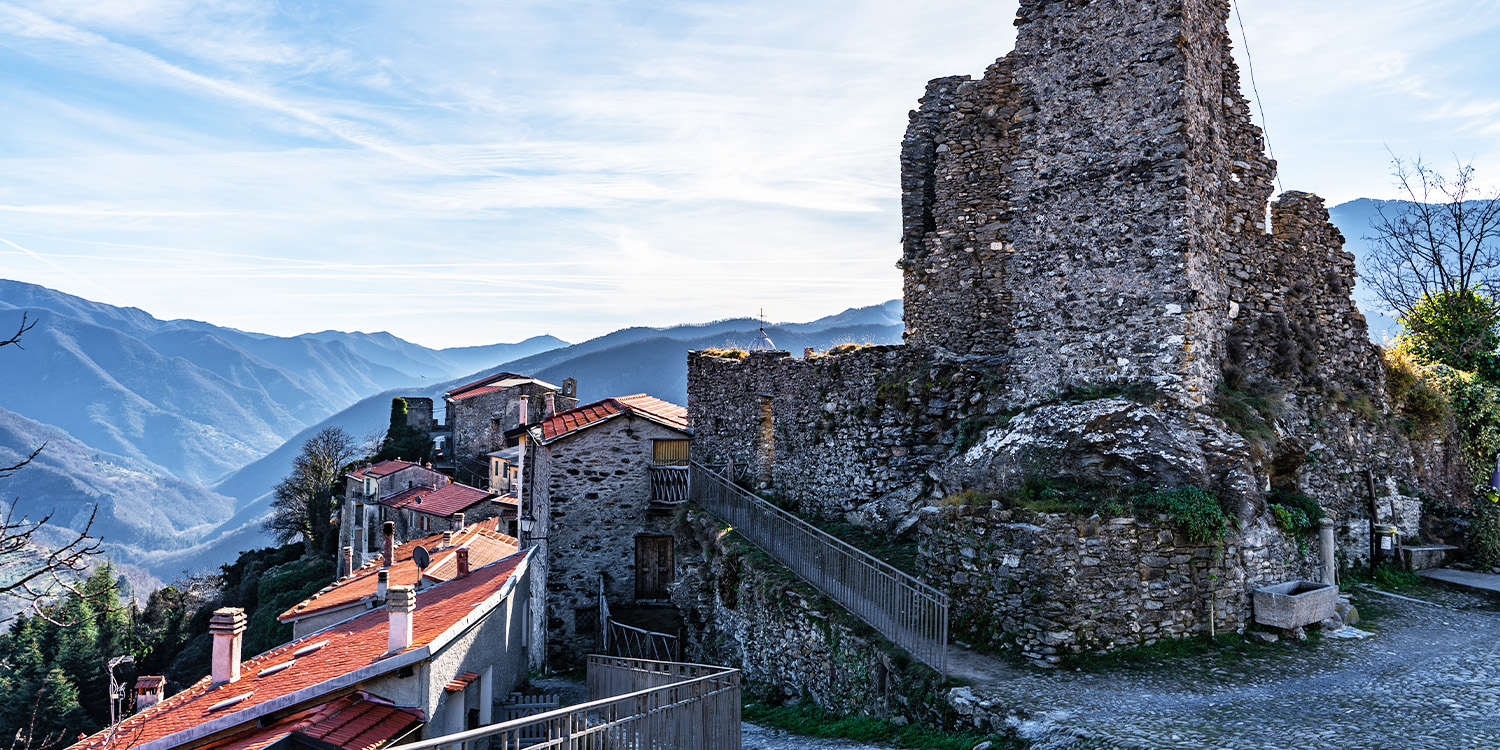

Triora, as a town in the Ligurian hinterland, has maintained a complex society for centuries. It should not be recognised only by its agro-silvopastoral role.
There was a ruling class, powerful, proud, very rich. Entrepreneurs, often very cultured, capable of going beyond what was learned in the three or four school groups held by religious people. People who know Latin, who have relations with the world, who also go around the world, who command, explore, operate in fields not known to most. Businessmen who have large estates and live a good life. They know the classical, pre-Christian world, perhaps they practice alchemy, they move money.
There are the professionals. The notaries on whom every private and public act depends. The doctors who treat according to ancient sources, but they certainly know popular medicine. Unreachable. Triora is a place of clergymen, priests and friars, all of whom are highly cultured and capable of influencing consciences. Beloved, but also hated, because they are honest men. The big landowners only trust the “manente”. A super-countryman who administers large estates.
Then there is the world of the big workers. The Triora area is populated by tanners who do a hard job of supplying hides to the many shoemakers, already famous in the Middle Ages. After all, with such a difficult and stony terrain… without shoes… you won’t get very far. Wool production provided work for the textile industry. In Triora, they also liked to be elegant, not just have sturdy clothes.
More than one, over time, manifested artistic genius. It is a land of painters, capable of moving between Liguria, Piedmont, Monaco and Provence. Some people make their fortune from stone. It’s a great thing to make money from stone, but if it’s local slate… for three months the quarry is yours.
Most live the life of the fields and woods. From the woods comes the wood for the skilled local carpenters, the “bancalari”, or the chestnuts that are everyday food for many. There is also wood for the blacksmiths, the farriers, who put “shoes” on horses and oxen. At the edge of the forest, always in the heat, the charcoal burners work. Silent and gloomy, black men. From the fields, everything, be it vegetables or hay for the animals in winter. In time, they also accept the produce of the New World, such as potatoes.
On the doorstep of the mills are the millers, men trusted by the rich and capable of producing quality flour. Watched by the shepherds who move herds and flocks: they are not from Triora, they are from the Briga area, even higher up. Many people walk on roads and paths, with donkeys or mules. They know the plants, they look for mushrooms, but it is always good to be careful, in the places of passage and very rich, there is no lack of brigands.
The museum tells everyone’s world, starting from the bottom.
Ancient trades
The businessman
A graffito on a portal in Triora represents a person from the past. Although a little caricatured, one notices the elegant clothing, the hat, the advanced age and the determined walk: he is perhaps an exponent of the many wealthy families of Triora, administrators of lands and houses.
The 'professional'
(notary, lawyer, doctor, physicist) The presence of a solid basic scholastic education, entrusted to religious, has allowed the formation of many professional figures: notaries, lawyers and doctors are particularly important, the latter being necessary in an area of transit and trade.
The religious
(parish priest, canonical chaplain, regular religious). The historical authority of the parish priest goes hand in hand with that of the many chaplains included in the “college” of priests (this is why the parish church of Triora is called a “collegiate church”). They celebrated masses on altars in the parish church and in chapels in the area. In addition, there were convents in Triora and the local schools formed the first level of study for the religious who left the town for many monasteries and churches in Italy.
Il manente (The handle)
He is the trusted man of the wealthiest families in Triora. He is the one who manages their land, based on a solid agreement. A specialist in agriculture and forestry, he is much more than a simple farmer. He supervises teams of workers and it is a profession that reaches into the 20th century.
The coalman
Humble, tiring and careful work, necessary to produce charcoal. He has a specific expertise in the knowledge of wood and fire. He builds the charcoal pile and controls the internal combustion for many days, living close to the forest.
The tanner
The large number of animals for slaughter is directly linked to the presence of leather processing. However, this is hard work and, in its own way, polluting because of the use of natural substances which, although they are natural, are capable of creating a bad smell and making the water putrid. This is why an isolated area was reserved for them.
The shoemaker
The availability of tanned leather was linked to a traditional activity of Liguria, a great shoe exporter in the Middle Ages: shoe making. The stone roads made sturdy footwear necessary and the ability to make them had evolved over time. Between Triora and Molini, there were five shoemakers in 1900.
The blacksmith and the farrier
Where there is wood, there is iron, because heat is needed. Where there are many animals and stone roads leading to the mountain passes, there are farriers, those who “put shoes” on mules, donkeys, horses and oxen. Place names recall the presence of ironworks. In 1900 there were four farriers between Triora and Molini.
Weavers, tailors
(6 in Triora with Molini in 1900 and 3 tailors and 5 cloth merchants and 4 hatters). The rules on weavers in the Statutes of Triora suggest a strong specialisation in the production of cloth, obviously made from wool obtained from the flocks in the area. This gave rise to the typical clothing of the area, made in 1900, between Triora and Molini, by six weavers, three tailors and four hatters. There were also five fabric merchants.
The slate quarryman
Chapter 87 of the reform of the Statutes in 1592 refers to the interests of those who discovered and were able to quarry for three months in the slate quarries, known as “clapa” in latin, for the dialectal word “ciappa”: the slab for building use. It is clear that the number of architectural stone elements visible in the area is linked to the skills of these craftsmen, honed over time and following styles and taste.
The artist
(remember the Gastaldi and other painters from the Argentina valley area… with cultural reflections) Historical sources and territorial studies reveal how Triora was a land of artists. Inspired by the quality of the works of art brought to the rich town, painters and book illuminators established themselves over time. Among the many are Bernardo Rebaudo and, during the 17th century, Giovanni Battista and Lorenzo Gastaldi, active between Liguria, Piedmont, Nice and the Principality of Monaco.
The miller
Some landowners as well as charitable associations in Triora and the surrounding area owned mills to produce wheat, chickpea and chestnut flour. This was already the case in the Middle Ages and three hundred years ago. The protagonist, however, is the one who runs the mill: the miller. He is entitled to a share of the milled grain and is required to pay the state tax on what is produced. In the present territory of Triora, there was an important mill in the highlands near Verdeggia, on the Capriolo stream. The majority, however, were, of course, at Molini… di Triora, at the bottom of the valley. In the year 1900 between Triora and Molini there were three flour merchants and three millers, the Lanteri brothers, a Lantrua and a Moraldo.
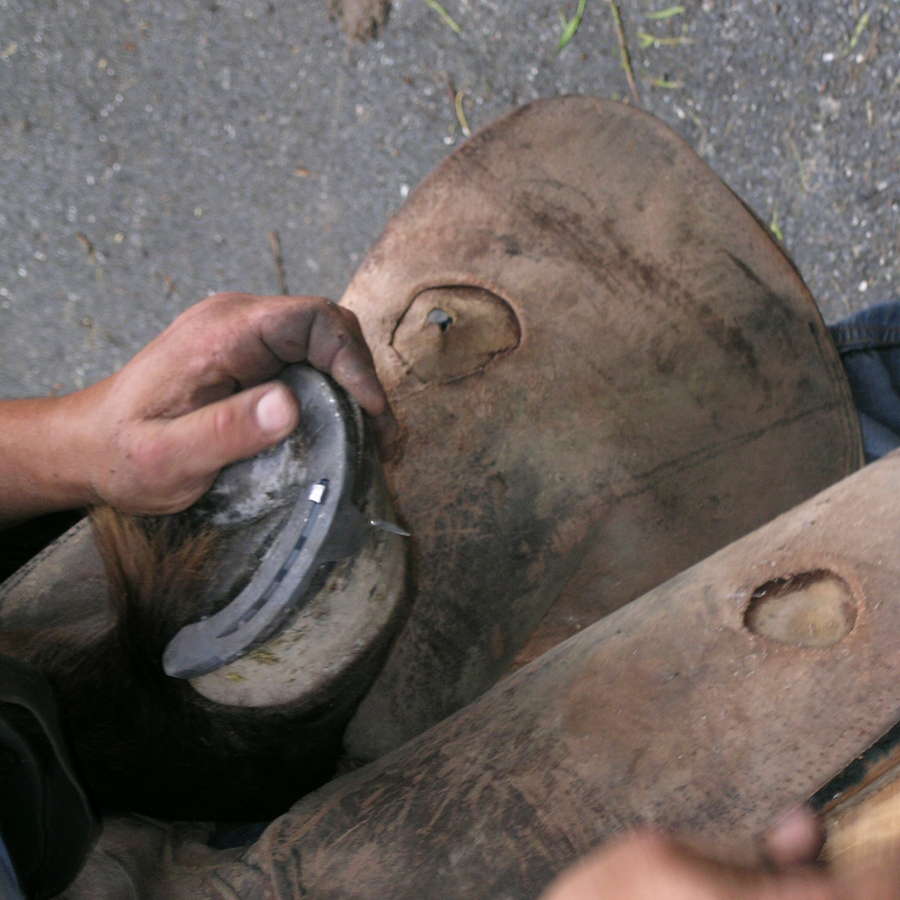
In the kitchen
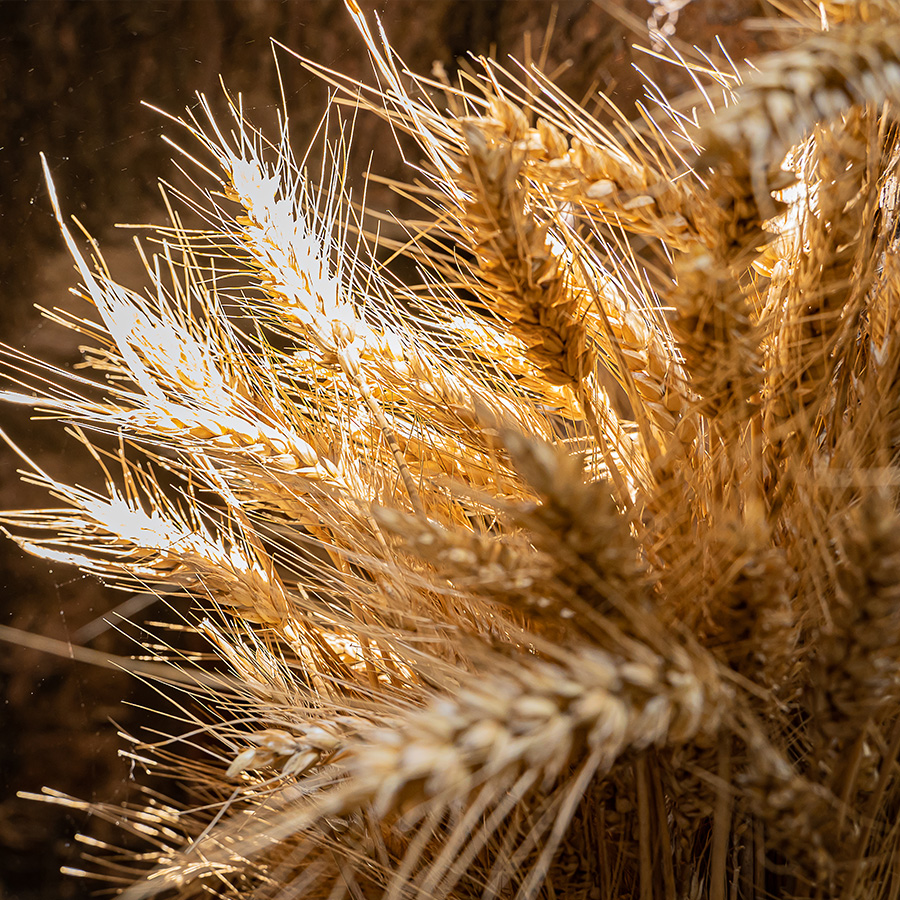
Ā matin castagne, a megiudì pestümi, â sèia castagnùn”, i.e. ‘In the morning chestnuts, at midday chestnut pounding residues, in the evening second-hand dried chestnuts’.
Triora e il suo territorio sono anche una scoperta gastronomica. C’è la semplicità di tutti i giorni, genuina, frugale, ricordata da questa prima frase. Però c’è anche la tradizione di una città e del suo territorio, di singole famiglie, anche molto ricche ed esigenti nonché di ricette proprie di solo insediamento, insomma, di di una attuale frazione. Si parla sempre e comunque di “cucina bianca”.
Si tratta dell’alimentazione tipica della montagna ligure occidentale. Di una terra alta che vede il mare, ma sorprende per la sua unicità. Si dice “bianca” perché è fatta di ingredienti come farina di frumento o altri cereali, farina di castagne, latte e formaggi, rape e più tardi patate, legumi, pane…volendo stoccafisso e baccalà… Insomma, il colore non emerge. Solo bianco. Si parte dalla secolare presenza della produzione di grano, di cereali, di castagne. Da qui la farina, bianca e la pasta, fresca per veloci piatti legati al mondo dei pastori e della vita nei campi o per le onnipresenti torte salate, un tempo cotte nei forni pubblici del paese. E quindi pane, quello di Triora, che rientra anche nell’impiego come elemento di base per alcune preparazioni semplici da forno. Mai sprecare nulla.
Non mancano preparazioni più complesse, con il grano pestato a mano. Più che altro più lunghe, perché si parla di quanto arriva in eredità da una vita più lenta e misurata. I musei di Triora vi fanno scoprire la cucina di un tempo, con il paiolo sempre sul fuoco. Un mondo di zuppe, una conoscenza profonda di legumi e soprattutto di erbe, con tutte le loro caratteristiche. Positive, nel caso. È quei che si pensa che una zuppa d’aglio sia afrodisiaca. Il mondo gastronomico locale è anche un mondo di tradizioni ricche: non manca la cacciagione, non manca l’osservare i tempi in cui la religione impone una “penitenza” che si traduce, da seicento anni a questa parte, allo stoccafisso, al pesce salato, che vengono da lontano e alle locali trote e lumache. Spesso si incontrano sapori forti, come quelli del sanguinaccio, della ricotta fermentata, il brùssu. Piacevano e piacciono. E per la festa, oltre ai fritti, ecco i tanti dolci, la cui memoria affonda nel tempo (miele, nocciole, castagne, latte). Triora e il suo territorio, l’ambito brigasco con la cucina di Realdo, i ristoranti, le botteghe di prodotti sono una scoperta gastronomica in cui bisogna pensare oltre il modello classico di luoghi che guardano al mare. E capire che cosa sono, magari, il Bernardun, i Ciapazoi, i Sugeli o la Brususa… da scoprire e da gustare. Ricordando che la presunta strega Franchetta Borelli, durante le torture, aveva chiesto da mangiare: prima una minestra di pangrattato. Poi alzò le richieste… una torta…
Read more
Mowing was carried out during the month of August. For example, one and a half hectares of lawn, practically two football fields, could be mowed very well in eight working days. That is if there were only a few mowers. More grass, more mowers. With just a few tools for centuries, which you can learn about in the museum. Suffice it to say that each worker carried at least three or four blades with him, changing them every time one of them cut less.
The hay produced was transported to covered and safe sites. It was a time of great mule traffic, to and fro several times a day, although in more recent times cable cars had been installed. The meadows were then observed, cared for all year round, when it was necessary to clear shrubs that would otherwise have taken the place of grass.
While working on the more isolated meadows, it was necessary to settle with the whole family in brick-built huts, living in absolute contact with Nature. It was the life of the meadow. At night, little light, the stars and dreams watching the distant lights of Triora or even more distant villages if not settlements along the coast.
Between speleology and archaeology: the game of discovery
The territory of Triora tells and tells of times long gone by. Exploration, even if only visual, of the places reveals a notable presence of prehistoric archaeological sites. They are all located near or inside caves.
The many caves, mostly small or shelters, of a rock that appears continuously perforated like a Swiss cheese. In them, the remains of a human presence dating from more than 5000 to 2000 years ago have been found. These are generally burial places, although animal remains have been found, so some shelter could have been used for hunting activities. It was possible to assign a precise period of occupation to the sites thanks to the observation of pottery there. This is the principle of archaeological excavation in layers.
Each layer, a period. Because in the layer there is material that can be dated, even if only by comparison with others present… perhaps in other areas of Liguria and beyond. We start from the most recent stone age, the Neolithic. These were the times when agriculture and sheep farming were already widespread… a constant in Triora and the surrounding area. 5,000 years ago.
Read more
We then move on to the Copper Age, an early metal age, from 450 years ago and we arrive at the Bronze Age and then the Iron Age, which coincides with the passage of Liguria under Roman control, some 2200 years ago. There are constants, for millennia… we are talking about people who have used small seashells for a long time to create necklaces and ornaments. The sea, after all, is a little further on.
Ornamentation is present, always, as with the bronze bracelets preserved in the Buco del Diavolo, near Borniga, a hamlet of Triora. Yes, the names of these places are fascinating: Arma (meaning ‘cave’ in the pre-Roman Ligurian language) della Grà di Marmo, Arma della Gastéa, Tana della Volpe and Buco del Diavolo. Places that are not very accessible, where fearless archaeologists/speleologists have worked. They have come across incredible objects, such as glass paste objects from North Africa. They arrived here on trade routes of 3500 years ago.
One also wonders about the very long local tradition of burial in caves, which came close to, if not beyond, the civilisation of the Ligurian mountain tribes. Inhabitants of defended high places. There are several of them in the area and one is thought to correspond to the present-day town of Triora. Exciting…
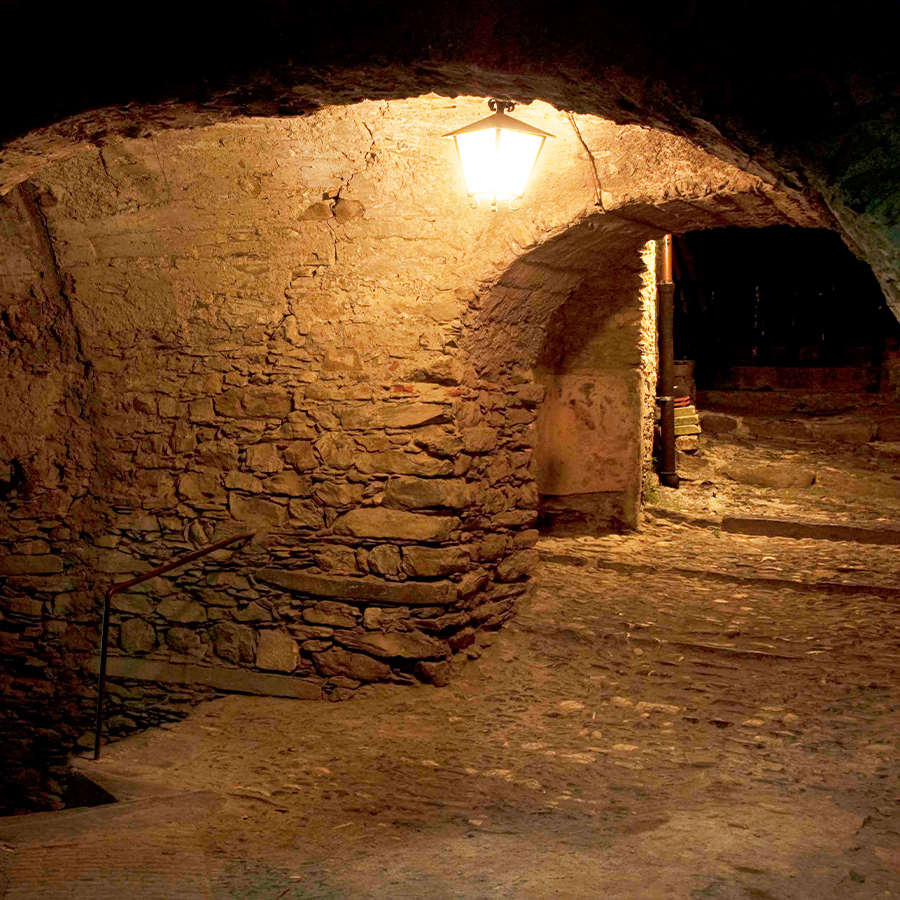
Guards and thieves
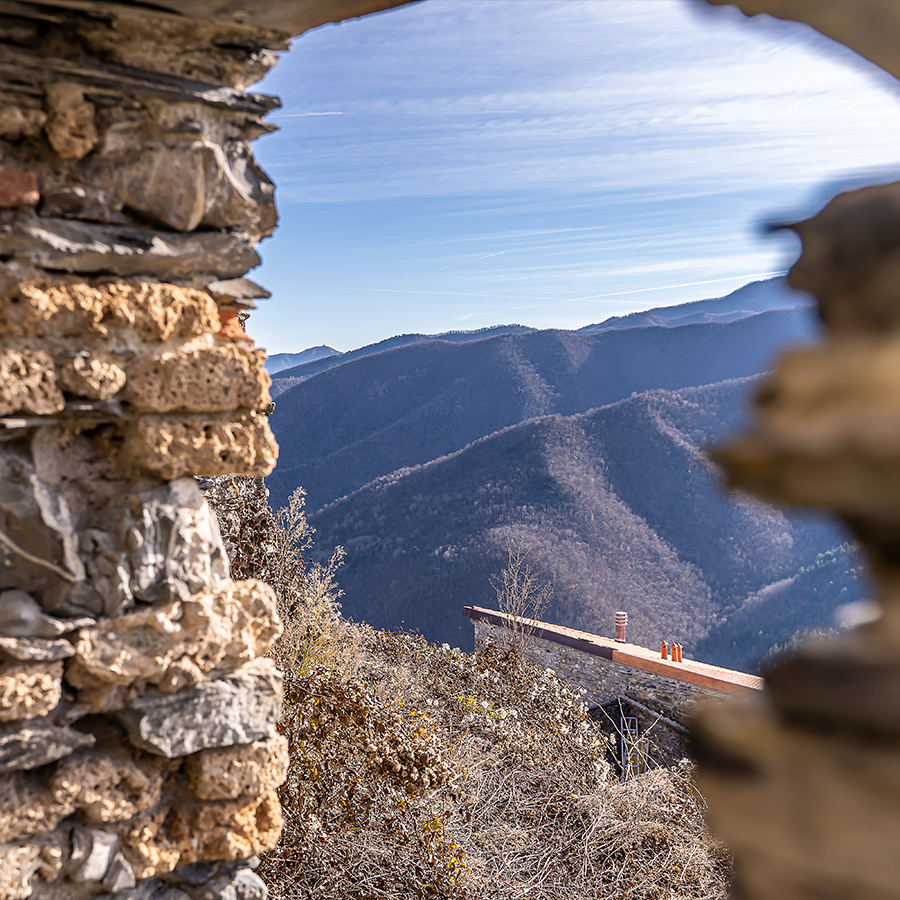
In the territory of Triora you can play guards and thieves. Today. Let’s make teams. On one side the thieves. As in the past: the thieves attack merchants on the roads or cut down trees in the woods without permission. They take advantage of the possibility of taking refuge in the neighbouring territories not belonging to Triora, but linked to the Savoys; the guards: the “cavallero” of Triora with some public guards, his “famigli”.
When the situation gets worse, you can enlist with the Corsican soldiers in the service of the Republic of Genoa. But always be careful. The thieves are known, they are “bandits”, many of them have already been sentenced several times, they have nothing to lose. If you think you are good walkers or can run and jump over rocks, if you know how to shoot with rifles and pistols loaded from the front or know how to use any kind of bladed weapon, if you can spend sleepless nights without shelter, in the woods and in the cold, you can play this game. Either side or the other.
Warning: it can be very short-lived. As guards, you will have a low salary. As thieves, in the best of situations, you will end up rowing on a Genoese galley, tied to your post. Six months you might survive.
A child’s world and crib statues
Building with wood. Also something to impress and amuse children and young people. In Triora, as in other rich Ligurian towns, wooden dummies with moving limbs were used as statues to be placed in churches and carried in processions. Obviously, they were dressed in authentic, precious and delicate clothes, gifts from the local population.
Today they are impressive for their simple functionality, but they should be imagined standing on an altar. In Liguria, there is also a great tradition linked to the nativity scene. In Italy, the traditional Neapolitan nativity scene, for example, is well known. In the Iberian peninsula, the Catalan one. Genoa and Liguria, however, have produced nativity statues.
The skill of Genoese sculptors was born in the shipyards and became spectacular three hundred years ago, creating sacred figures of shepherds, merchants, artisans, port slaves… figures that even the children of Triora dreamt of… obviously those from the richest families.
Christmas is still warmth for the community today. Winter here is bewitching.
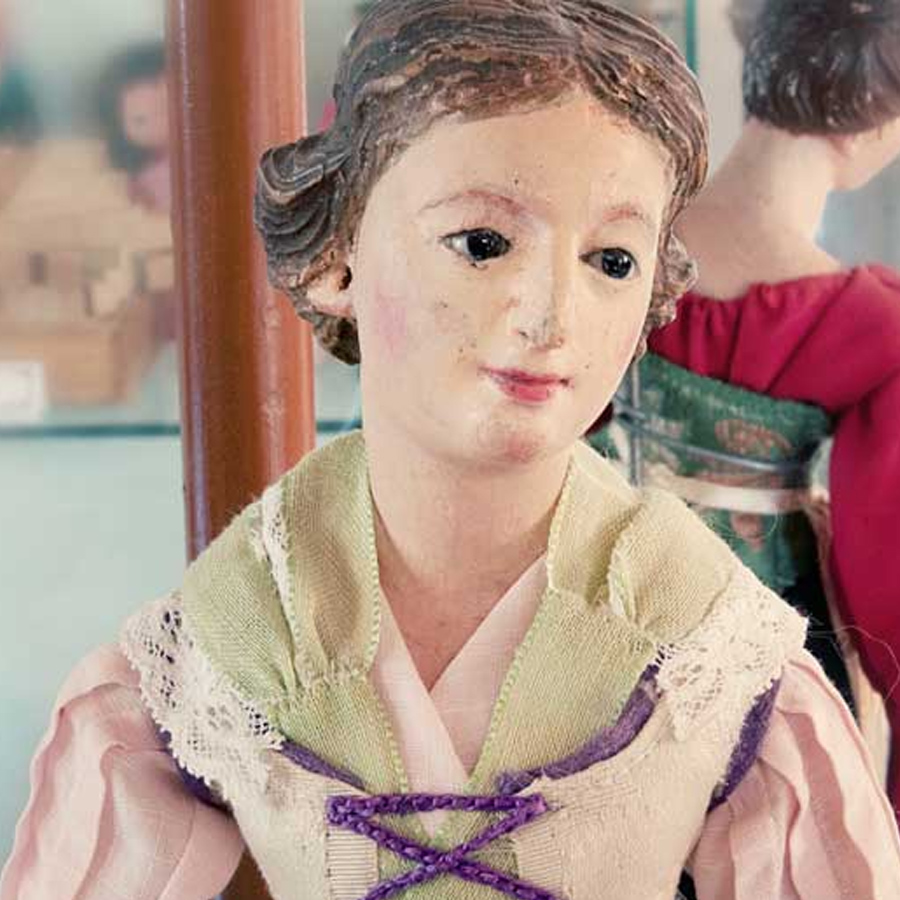
Margherita Brassetti, Tommaso Reggio: Triora attracts spiritual commitment
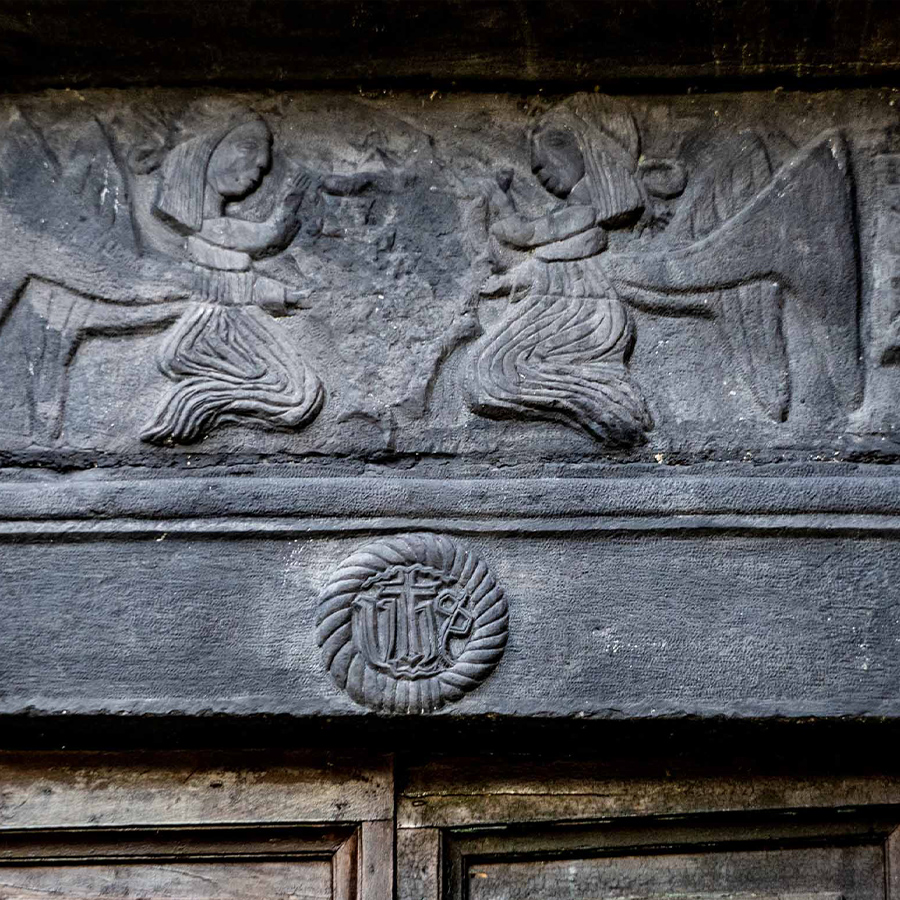
Triora is a spiritual place. One might say it has always been. Immersed in an extraordinary and unspoilt natural setting, there is always a sense of closeness to the power of Creation. In both the pre-Christian and Christian dimensions, religious people and realities have made Triora famous. There are countless religious people present or native to Triora known over the last 500 years.
Some of them have held very important roles far from their home town. So much spirituality materialises in the fact that they lived through some important passages, such as the preaching of Saint Vincent Ferrer and that of Saint Bernardine of Siena in 1418. A certain local attention to the Protestant Reformation, which is common in the Highlands of Liguria, should also be investigated.
At a symbolic level and beyond, the landmark remains clearly visible in the area. Once located in the municipality of Briga and then, since 1947, in the municipality of Triora, the tall bronze statue of Christ the Redeemer stands near the summit of Mount Saccarello, at 2200 metres. This has created an important synergy, from the pre-Christian world that looked to the mountains as divinities to the presence of the divine on the peak.
Read more
The statue came as a celebration of the 1900 Jubilee, as did 19 other structures on high peaks throughout Italy. The Archbishop of Genoa, Mons. Tommaso Reggio, who was proclaimed Blessed of the Catholic Church in 2000, liked the project very much.
His confessor was from Triora: one of the many religious mentioned above. Giuseppe Giauni who was indefatigable in the project. Indeed, the statue, made in France, had a complex history, since it was only placed on the stone pedestal in 1902.
Two eminent figures are well remembered in the museum context of Triora.
Tommaso Reggio was in love with Triora. He went to Triora to follow the placement of the statue closely, and carried out intense apostolic work, which also led to the presence of the well-deserving nuns of Santa Marta in Triora. Unfortunately, he died in Triora after a short illness on 22nd November 1901. Without having seen the placement of the statue. He would have loved to be buried in the mountain town he adored, but the body was taken to Genoa.
Margherita Brassetti arrived in Triora at the same time. Born in Cagliari (1877), she contributed to the creation of the statue with the then considerable sum of 10,000 lire and was active for years in religious activities and Catholic associations.
Triora has so much to tell. Indeed, it is known as the “mystical Triora”, as defined by Blessed Tommaso Reggio.
The sense of community is also reflected in the centuries-old history of associations. The oldest of these have a religious value: the Confraternities, such as St. John the Baptist, the Confraternity of Good Death, the Confraternity of St. Louis, the Confraternity of the Holy Spirit, the Companies attached to altars in sacred buildings, and women’s prayer groups.
This means equality despite different social levels, as well as devotional practices, a heritage of customs and festivals, mutual aid and support for the poor. Associations between shepherds, usually named after St Roch, were active in the economic support of the Church, with the aim of protection during hard work in the fields.
In recent times there have been important associations that have been involved in local culture and a recovery of memory, handing over, for example, an important part of the museum exhibition. The Pro Triora Tourist Association, for example, has been and is fundamental in preserving local memory and providing information to guests. It is in the same spirit that working groups are formed to look after the symbols of the area, such as the Comitato Pro Saccarello, which looks after the maintenance of the statue of the Redeemer and the surrounding area.
Brigasco’s associationism is also of considerable identity level, with a field of action both in Italy and in France and linked to historical information magazines, also written in the local language.
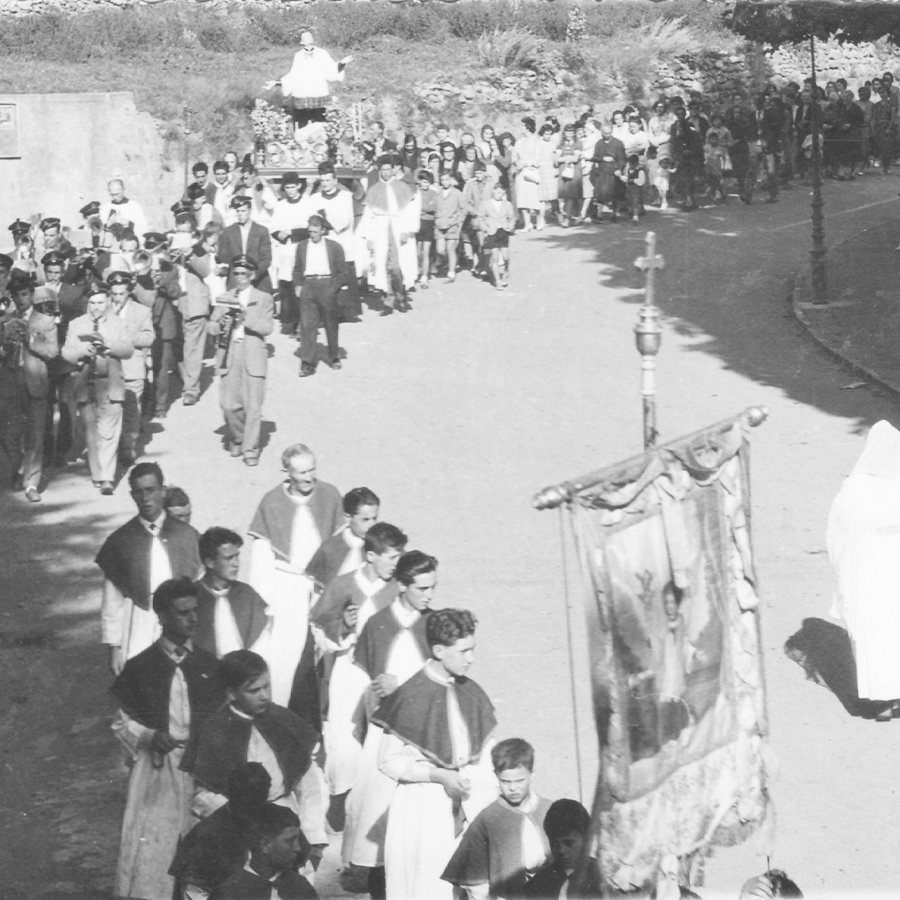

Staying together. Sociality in Triora.